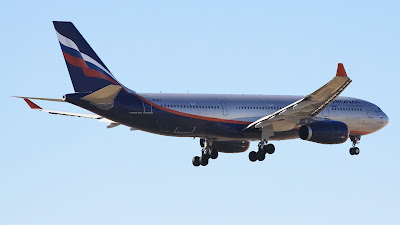The Craziest Routes Around The Russian Flight Ban
It was primarily Ukraine that had aviation activity rocked recently amid amounting tensions in its region leading to security concerns. However, following the invasion of the country on February 24th, a wave of measures were introduced across the international skies, causing obscure flight paths to be drawn on the map.
The UK was the first to ban Russian carriers from its airspace, a move that was quickly countered by Russia with a similar ban on the Western European country. Poland was then the first EU member to ban Russian flights and aircraft before the rest of the union soon followed. Other nations such as Canada and the United States all followed the pattern.
With a series of airspace bans in place across the continents and security risks increasing, airlines have been forced to change their paths significantly in order to get to their destination. It’s not just Russian or European carriers that have had to adapt. Global operators have had to make notable shifts.
Far East
To highlight the international impact, let's start with a flight that’s grabbing attention today. Japan Airlines' JL43 is heading from Tokyo to London. The service usually heads north to Russia and flies west across the nation and across Scandinavia before landing in the capital of the United Kingdom.
Today, it headed in the other direction. It crossed the Pacific Ocean and cut through Alaska. The average flight time for JL43 has been 12 hours and 12 minutes over the last month, but today, the flight was scheduled to take 15 hours and 12 minutes to complete.
#JL43 last operated 2 March flying a distance of 9845 km over Russian airspace. https://t.co/q1b3CRdw87
— Flightradar24 (@flightradar24) March 4, 2022
Today’s route is filed at 13,465 km. https://t.co/9BTLQfZL0m https://t.co/MfPWKnWzou
Transatlantic mission
In another long-haul route, Russian low-cost carrier Nordwind Airlines has had to cut around mainland Europe in order to reach Moscow from Cuba. The operator flies across the North Atlantic Ocean and through the Norwegian Sea before heading south along the southern Barents Sea.
Flag carrier woes
An airline that has been rocked by the current climate is Aeroflot. As the national airline of Russia, the company has limited international options. An early example was SU2091. Earlier last week, it was cutting through Poland, Slovakia, and Hungary to get to Serbia during a flight that took 2 hours and 35 minutes to conduct. However, on February 28th, the airline's Airbus A330 traveled through Kazakhstan before heading back east across the Black Sea.
Aeroflot flight #SU2091 returned from Belgrade to Moscow, via... Kazakhstan. Flight time 5h 45min instead of previous 2h 35min. https://t.co/PXoycTIhvn pic.twitter.com/AM9t0peg5w
— Flightradar24 (@flightradar24) February 27, 2022
Aeroflot has had to decide swiftly amid the ever-changing conditions. It was in the air on the way to New York on February 27th before turning back to Moscow due to Canada banning the airline from its airspace.
Aeroflot's SU124 from Moscow to New York.
— Jakub Krupa (@JakubKrupa) February 27, 2022
Hope you enjoyed your flight. 😂 pic.twitter.com/e3dxLPfnQC
Market challenges
Overall, the crisis is having a domino effect across the industry. Airlines flying to the likes of Beijing and Tokyo from Europe are the worst hit. Finnair has spoken of how it had to cull portions of its network due to route issues. Flights between Helsinki and Tokyo have another five hours on top of the journey time due to the conditions. EUROCONTROL notes that the route requires another 2,137 NM (3,960 km). Helsinki – Beijing is also adding on the mileage, with another 1,729 NM (3,200 km). Airlines will be expecting more surprises in the coming weeks.








0 Comments